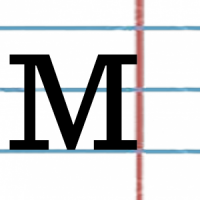I. “Derek you need to mention that you’re an artistic jock. That’s pretty rare, right?” Sami Ahmed asked with his unique charm. Sami, James Paek and I practiced pitching ourselves to companies as an exercise during our recent Experience Institute classes in Chicago. Is anyone going to hire me because of these interests? I don’t know. Why would anyone hire me for anything outside of my great hair? I changed my pitch to, I connect concepts from areas that include: music, sports, journalism and culture.
II. Journalism is a passport into culture. The best journalists major in the minor. They find stories about Trader Joe’s Pirates and the scars of a Jim Crow South. Varied knowledge of movies, music and historical events creates intersection points between different aspects of culture. The best stories connect the margins of society to a mainstream audience.
III. “Every group has a mainstream: those qualities, behaviors, and values supported by the group. Other qualities and behaviors are put out of the center, to the periphery.” Fellow Experience Institute student Lan Ngyuen presented this idea to our class. In a day of peer-to-peer teaching that included chicken cutting and clown noses (I was wearing the clown nose), Lan’s lesson caused me to start thinking about the mainstream and the margins in groups. This power structure exists in every group – from Fortune 500 companies and improv softball teams to pop radio and Silicon Valley.
IV. All cultural shifts happen when the mainstream is influenced by the margins. White musicians and DJs brought rock to the airwaves in the late 1950’s, and the current superhero movie trend came out of the Comicon subculture. You see, even Batman’s relevance shifts between broad daylight and Dark Knight.
V. Before landing on the current title, I was going to call this weekly collection (newsletter), “Riddle Me This Batman” in honor of the Riddler. I loved 1960’s TV classic with Adam West as a kid and only found out later that it was meant to be a comedy. Adam West recently acknowledged how playing Batman affected his life. For West to build a career after the show, he was forced to give up the desire for serious roles.
VI. I have a six year-old friend who deals with her frustrations in life by shouting, “Seriously!” I’m seriously considering my own sanity as I continue to write. Between a novel project last fall and the 50 posts I wrote in 10 weeks for the DK Chronicle, I’m writing with more variety than ever before. The burden comes not from the words, but the act of sharing them with an audience. I’m writing this newsletter to challenge myself to think differently about how I share and engage with my writing. I want to take the grit from previous projects and continue to explore.
VII. What builds grit? The key is to trade novelty for nuance. If you want to be great at something, you need to focus on the details of the work and avoid chasing trends and entirely new experiences. Grit means adding to the puzzle instead of starting over. All this comes from the Freakanomics podcast. They recently wrapped up Self-Improvement Month if you need any advice.
VIII. I’m developing a rule for how I decide if strangers are worth listening to for advice. In my experience/research, the people who give the best advice:
- Acknowledge other people’s contributions
- Admit what they don’t know
- Talk about elements of luck in their lives
On the contrary, people who feel invincible are setup to fall. No one is right all of the of the time when picking trends, noticing variables or starting a business.
IX. Did you know that 96% of companies fail in the first 10 years? Of the 30 companies on the DOW Jones Industrial Average, only 12 remain from 25 years ago. You’re welcome, kids trying to justify an art degree to your parents.
X. I went to an arts school in middle and high school where I trained as a classical singer. Our teachers encouraged creativity at every level—from songwriting as a science final to loose sentence structure (my grammar is still a work in progress). The teachers allowed us to sketch in our notebooks. The margins of my notebook were filled with sketches. In fact, sometimes I learned more in the margins than I did in the course work itself. I invite you to sketch in the margins.
